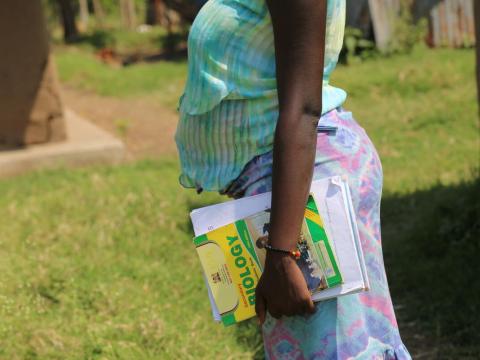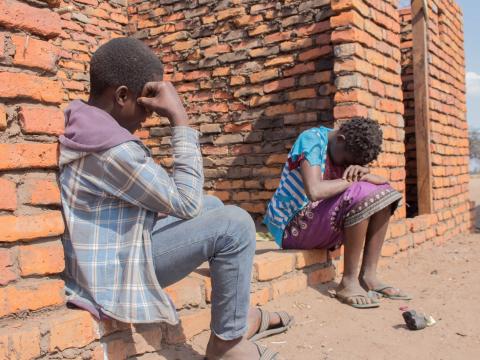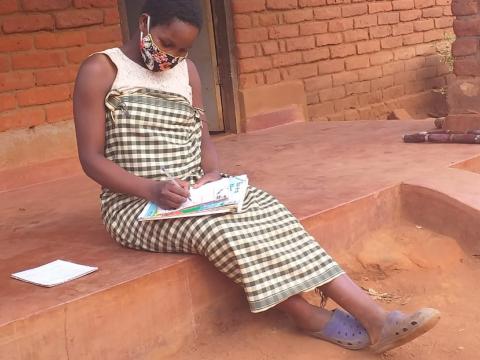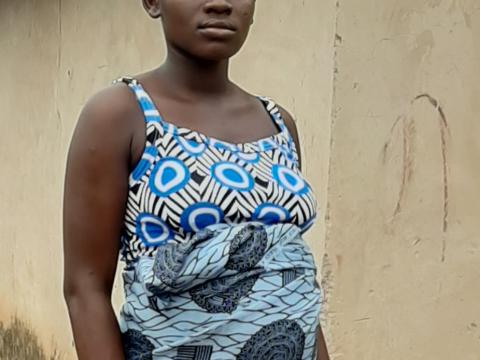
Nearly one million pregnant sub-Saharan African girls may be blocked from returning to school following COVID-19
By Tony Baker, World Vision Senior Advisor on education & Brenda Kariuki, World Vision's Regional Advocacy Director, East Africa
The combination of school closures due to COVID-19, and policies and practices in some countries across sub-Saharan Africa that do not allow pregnant girls or young mothers to continue their education, are putting many countries on a collision course in which an estimated one million girls in the region may not be allowed back into schools once they reopen.
We already know that extended school closures increase a girl’s chance of becoming pregnant. During the 2014-2016 Ebola outbreak in Sierra Leone, more than 14,000 teenage girls became pregnant, including 11,000 who were in school before the outbreak, according to a UNFPA study. Another study conducted at that time showed that girls and young women living in areas that were highly disrupted by Ebola were twice as likely to become pregnant than before.
While high teenage pregnancy rates are not new, recent headlines out of Kenya, such as that from Machakos County where nearly 4,000 school-aged girls have become pregnant in five months, have put concerns of increased adolescent pregnancy into the spotlight—and similar headlines will likely follow.
Across sub-Saharan Africa, World Vision offices report a similar pattern. In Krachi West in Ghana, a project has reported an almost nine-fold increase in teen pregnancies during the lockdown. Between October 2018 and September 2019, World Vision projects in Lupembe in Malawi saw 33 child marriages and 4 teen pregnancies. In the ten months since, the same area has already seen 49 marriages and 7 pregnancies. About 13,000 girls drop out of school each year in Kenya due to pregnancy; given the increases that are already being seen, this number could more than double.
The causes of teenage pregnancy vary and can relate to sexual violence, child marriage, lack of access to sexual and reproductive health services, and lack of access to education. While the root causes need to be addressed, the consequence cannot be the removal of one’s right to education.
Allowing pregnant girls and young mothers to continue their education is a sensitive issue, as evidenced by the range of laws and policies on the matter across sub-Saharan Africa. Some countries, like Tanzania, Togo, and Equatorial Guinea, outright expel pregnant girls and young mothers. Many more countries, including Kenya and Ghana, have re-entry policies that facilitate the return of pregnant girls and young mothers of school-going age to primary and secondary school. Nevertheless, practice often differs from policy, and sometimes requires girls to take a one or two year break before re-enrolling or pass specific exams.
Having learned from its experience during the Ebola outbreak (as well as an ECOWAS court decision ruling it discriminatory), Sierra Leone lifted its ban on pregnant schoolgirls in March 2020 and has promoted it as a measure that will help ensure girls’ education after the COVID-19 crisis. Countries across sub-Saharan Africa must learn from these lessons and prepare for the imminent increase in pregnant students by establishing policies or guidelines to facilitate their continued education and specifically seek to ensure the return of such girls and young women as part of nationwide back-to-school campaigns.
The Government of Kenya has already begun drafting new National Re-Entry Guidelines for Learners in Basic Education. The Guidelines are yet to be published but are anticipated to provide clear step-by-step guidance for schools and teachers to follow once a student has been identified as pregnant and how to facilitate the re-entry of girls who have dropped out due to early and unintended pregnancy. This will be important guidance for teachers and headteachers to have, as a surge in pregnant students may follow COVID-19 school closures.
In the face of the growing teen pregnancy crisis, specific measures are urgently needed to ensure that pregnant girls and young mothers continue their education, even in countries with positive re-entry and continuation policies. COVID-19 already threatens so much. Let’s not let it create a crisis in education that we can already predict.


